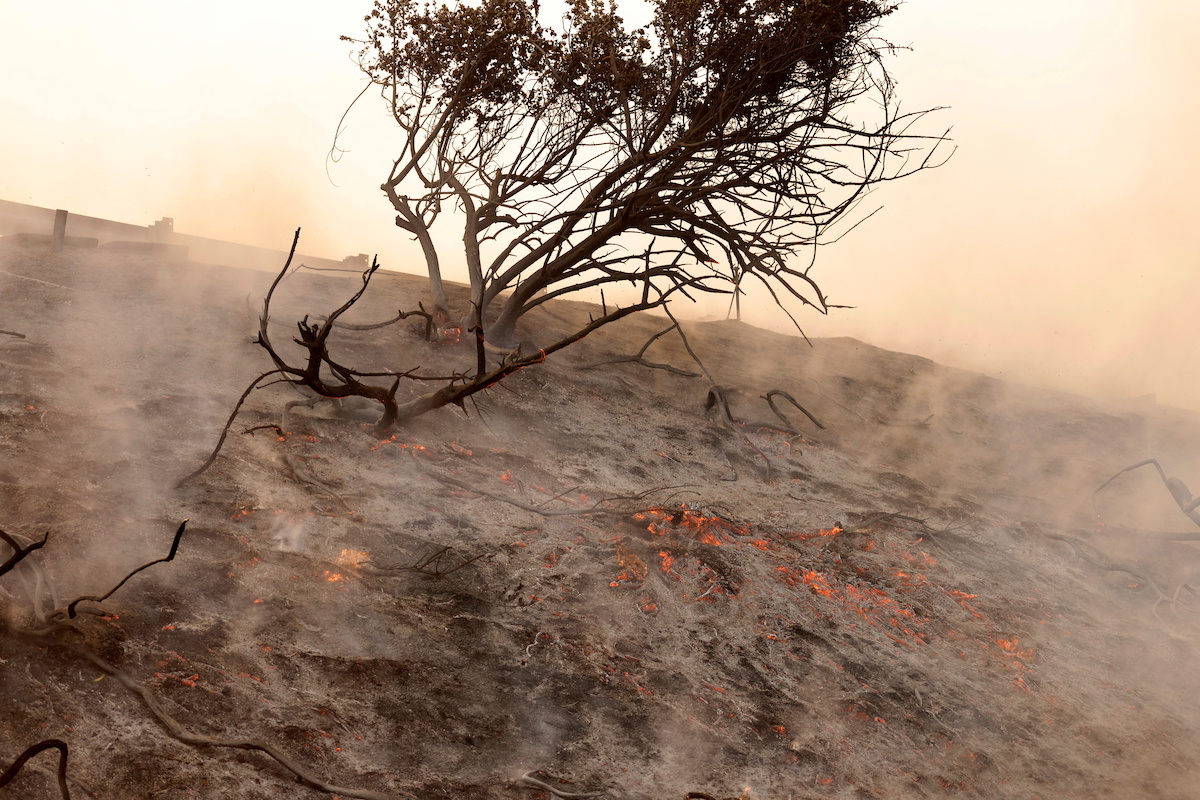The (dis)information war around Karabakh
Since the war flared up in Nagorno-Karabakh on September 27, an information war has also broke out between the parties to the conflict.
Both sides tell their publics about their own victories and about the trickery and weakness of the adversary.
Insults addressed to the other side and shocking video and photographic materials are also used to encourage the people and intimidate the other side.
The picture of hostilities presented by the sides is, of course, radically different from one another.
Selfies with flags and war maps
Armenia and Azerbaijan have both declared martial law. This means that freedom of speech is significantly limited.
In Armenia, where the situation with independent media has been traditionally much better than in Azerbaijan, a special law has been in effect since October 8, prohibiting negative coverage of the situation at the front.
The main issues that the sides periodically inform the public about are the course of hostilities, as well as losses, both their own and those of the adversary.
The Armenian side regularly publishes lists of killed soldiers, and also reports on the deaths of civilians as a result of shelling.
Azerbaijan does not report the number of military deaths, promising to do so after the end of the war, and regularly informs only about the deaths of civilians.
• ‘Peace in exchange for territories’ – an opinion from Baku about the seven regions around Karabakh
• Karabakh: the battle for Hadrut and why it’s important
• В Ереване звонят колокола, и добровольцы собираются на войну в Карабах. Видео
On the Azerbaijani side, the functions of the main official ‘mouthpiece’ from the very beginning of the war are performed by President Ilham Aliyev’s Twitter account, on which he periodically reports on settlements ‘liberated’ by the Azerbaijani army.
Usually, after some time, this information is followed by video confirmation on the official YouTube and Telegram channels of the Ministry of Defense.
This is what happened with the villages of Talish and Madagiz, the cities of Jabrail and Fizuli.
With the regional center Hadrut, President Aliyev was a little too hasty, announcing its capture on October 9, while, according to the materials of the Azerbaijani side, it was taken a few days later.
The Armenian side, as a rule, has denied the loss of positions and settlements while President Aliyev every day issues information about new villages that have come under the control of Azerbaijan.
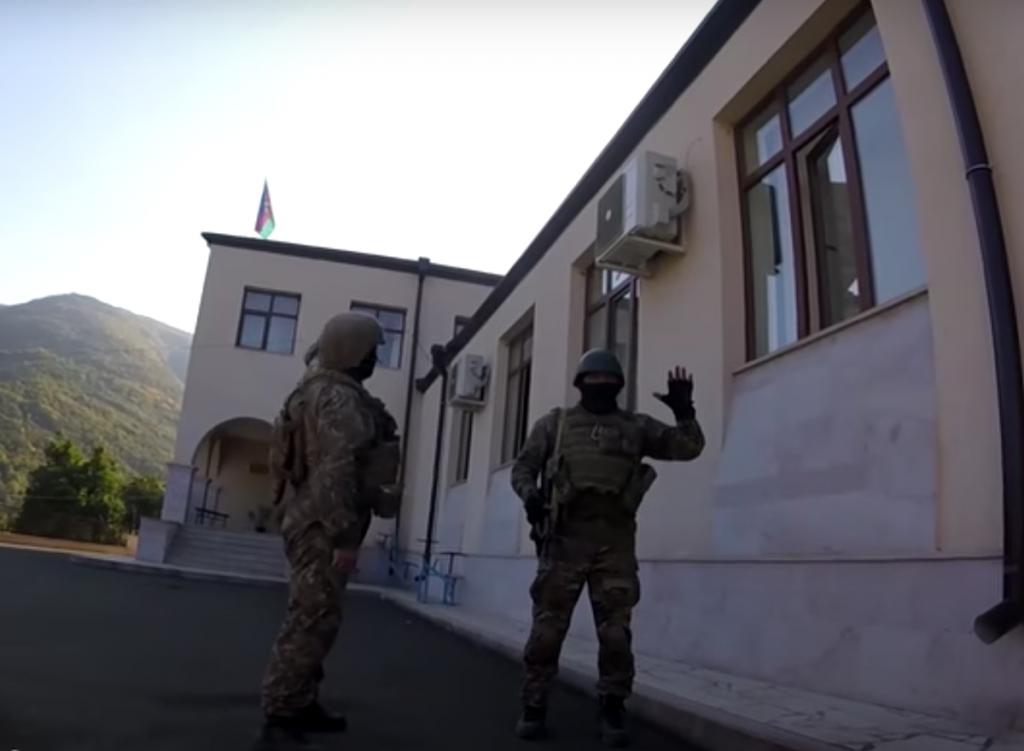
“Azerbaijani groups have begun to infiltrate villages, plant flags to show victory and sow panic,” said Artsrun Hovhannisyan, chief speaker of the Armenian Defense Ministry, on October 24, explaining the appearance of photos and videos featuring Azerbaijani flags.
The Armenian side has several times announced the successful counteroffensive of the Armenian / Karabakh troops and the huge losses of the Azerbaijani army. These statements were immediately denied by Baku.
In the same way, until recently, Yerevan denied significant advances and military successes of Azerbaijan.
The recognition by the Armenian side of the loss of the regional center of Gubadli / Kubatlu has become a precedent of its kind.
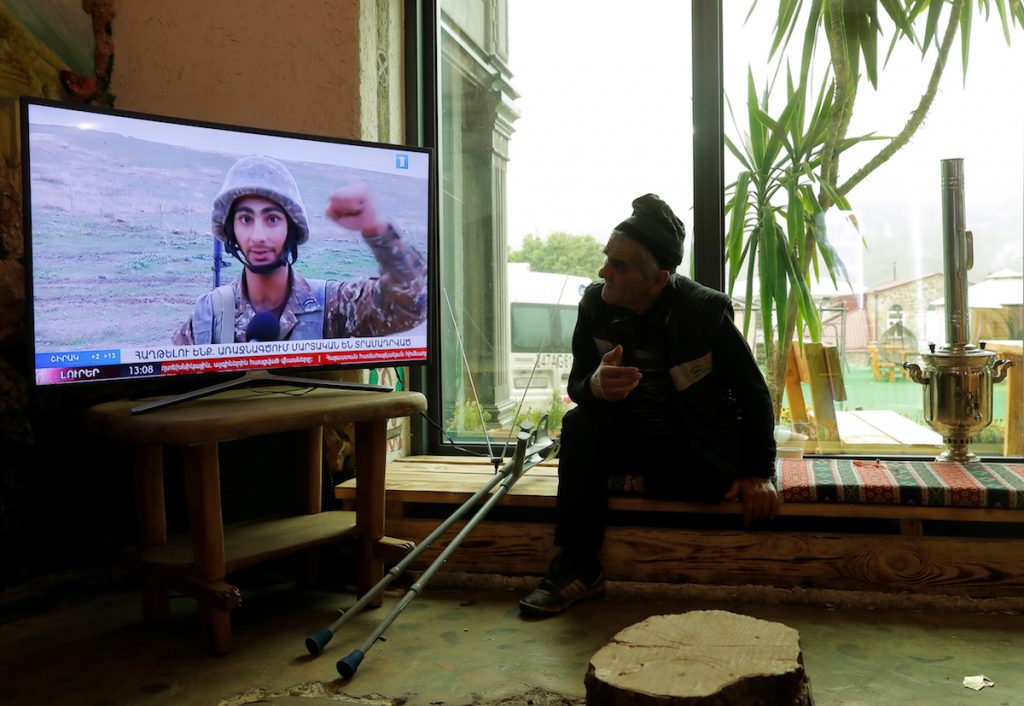
On October 25, Yerevan for the first time published a detailed map of the hostilities, which, of course, is very different from the maps periodically published by Baku.
There are no neutral observers in the combat zone, there are few neutral journalists, and therefore it is often possible to draw conclusions about exactly how events are developing at the front only by carefully studying the materials of the parties or by indirect signs.
Dead bodies and executions of prisoners
Official channels of both sides do not miss the opportunity to publish videos of the destruction of enemy equipment and soldiers.
In the case of Azerbaijan, these are most often drone attacks. From the Armenian – the work of artillery, infantry and anti-tank crews. Many of these shots show the death of people.
But, as a rule, the most shocking materials are published on social media, mainly on Telegram channels. They are used both for relaying the official point of view on events and official messages about the situation at the front, and for “leaking” materials that, for ethical reasons, official channels do not want to publish.
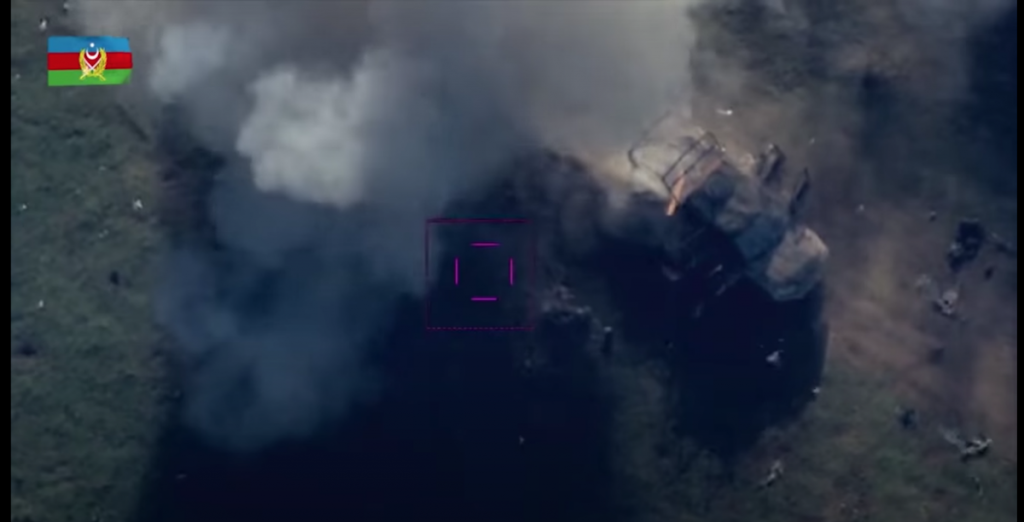
On both sides, on Telegram channels, there are a number of videos with the dead bodies of enemy soldiers, sometimes specially shown in detail, in some frames even being insulted and abused.

The video of the capture and execution of two Armenian soldiers caused particular outcry.
In Azerbaijan, this material was immediately called fake. However, the BBC and the international research group Bellingcat claim that two local residents were actually shot in the center of the city of Hadrut in Nagorno-Karabakh, which was occupied by Azerbaijani troops.
“Militants, mercenaries, terrorists”
The topic of foreign fighters fighting on the Azerbaijani or Armenian sides has also become one of the main topics of the information war.
From the very beginning of hostilities in Yerevan, it was argued that fighters of the Syrian pro-Turkish groups opposed to the Syrian regime of Bashar al-Assad, who were transferred to Azerbaijan by Turkey, were fighting on the side of Azerbaijan.
Several videos have also emerged showing people speaking Arabic during battles or in enemy positions already taken.
Later, the transfer of militants to Azerbaijan was confirmed by some Western publications, including the BBC and Reuters.
However, unlike Yerevan, which called them “terrorists” and even tried to convince Russia of the need for an “anti-terrorist operation”, Western media call these people “mercenaries” or “Syrian rebels.”
Baku, of course, denies the presence of foreign fighters in the ranks of its armed forces, claiming that Baku has enough of its own servicemen to take Karabakh.
In turn, in Azerbaijani sources, the assertion is often found that militants of Kurdish anti-Turkish organizations are fighting on the Armenian side.
“Dogs”, “Turkish fiend”, “Terrorist”
Derogatory and insulting epithets against the enemy have become commonplace both in official statements of the parties and in publications of state and independent media.
“We showed who is who, we are driving them out like dogs,” the President of Azerbaijan used this phrase in relation to the Armenian troops in one of his addresses to the people.

Commenting on each other’s messages, the military departments of the countries are also clearly competing in “eloquence”.
The Azerbaijani Defense Ministry called the next message of the Armenian military about the destruction of the Azerbaijani unit “the product of disturbing dreams of the representatives of the Ministry of Defense of this country”.
Representatives of the Armenian Defense Ministry often refer to the reports of Baku about the shelling of Azerbaijani cities by the Armenian side as “absolute nonsense and cynical lies”.
However, the media of the two countries have been competing for the most ‘scathing’ and offensive epithets addressed to the other side.
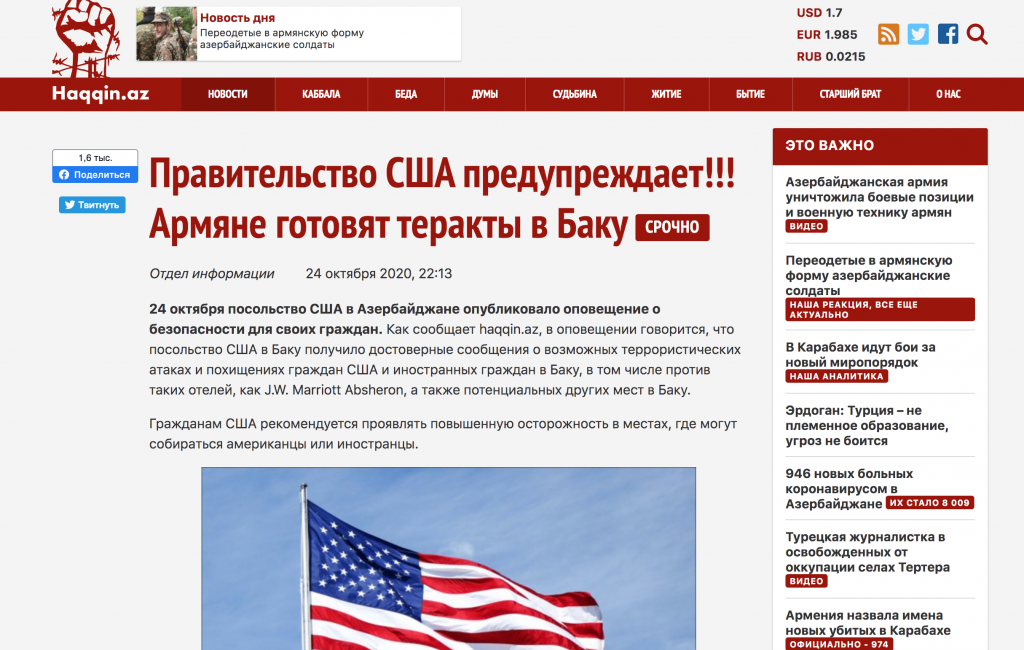
Analysts in the Armenian media claim that Azerbaijan has suffered huge losses, while the Armenian side is successfully repelling the offensive and sooner or later will defeat the enemy.
There are practically no alternative opinions either in the media or on social media.
A similar situation is in the information space of Azerbaijan – even radical opponents of the regime either support the military operation or refrain from criticizing the authorities.
Opinion: “Both sides are worthy of each other”
“Both sides work for their audiences to raise the spirits of the people, instill disgust on the opposite side, make aggressive statements,” Thomas de Waal, an analyst on conflicts in the South Caucasus, told JAMnews.
de Waal says that the parties do, however, disseminate some reliable information – for example, reports on the victims of the bombing from the Ombudsman of Karabakh, as well as reports on the dead and wounded civilians in Ganja, and this is not part of the information war.
As for the propaganda of the parties, according to de Waal, “often their goal is to confuse a neutral observer, as well as intimidate people so that the voice of a neutral person cannot be heard.”
“In this regard, both sides are worthy of each other,” the expert said.
“As for the materials of the execution or the demonstration of dead bodies, this is the result of 30 years of conflict, when the parties tried to completely dehumanize the enemy. Sometimes even children at school were taught that the other side was ‘an enemy.’
This is one of the saddest aspects of the conflict – it is difficult for a neutral person to understand why this is happening, one gets the impression that savages are fighting among themselves,” concludes de Waal.










